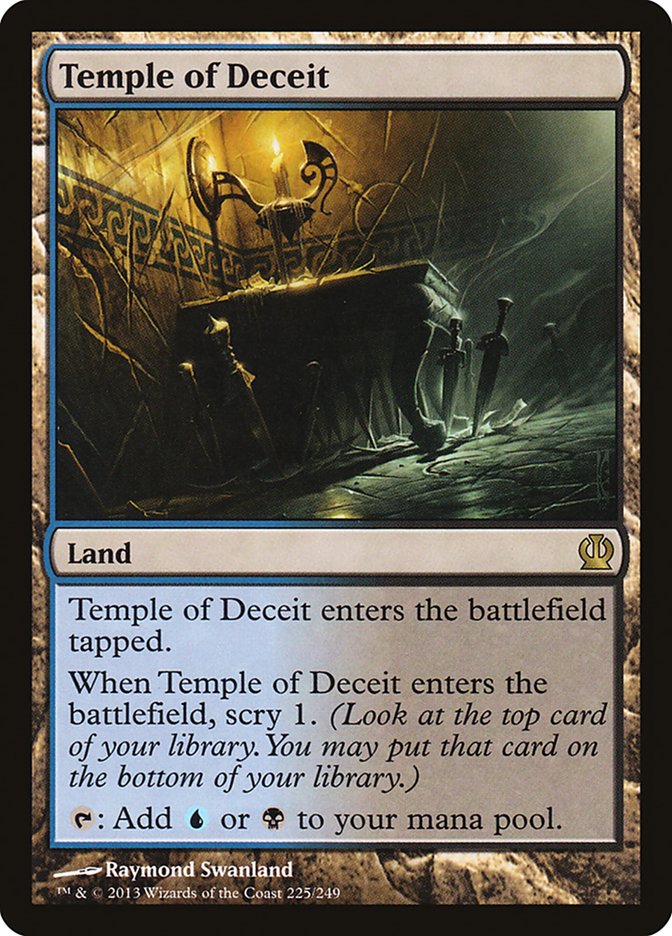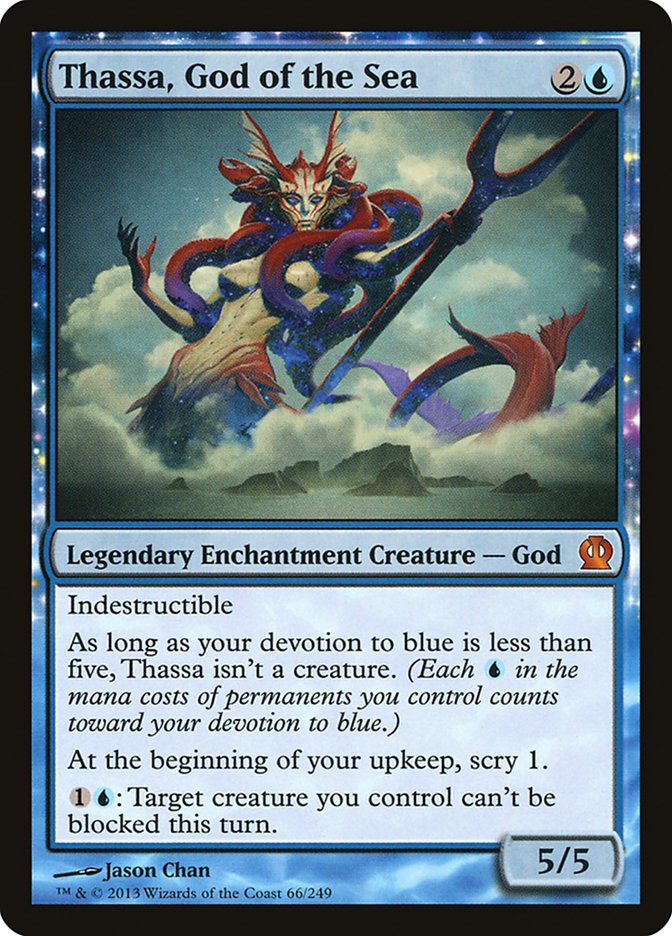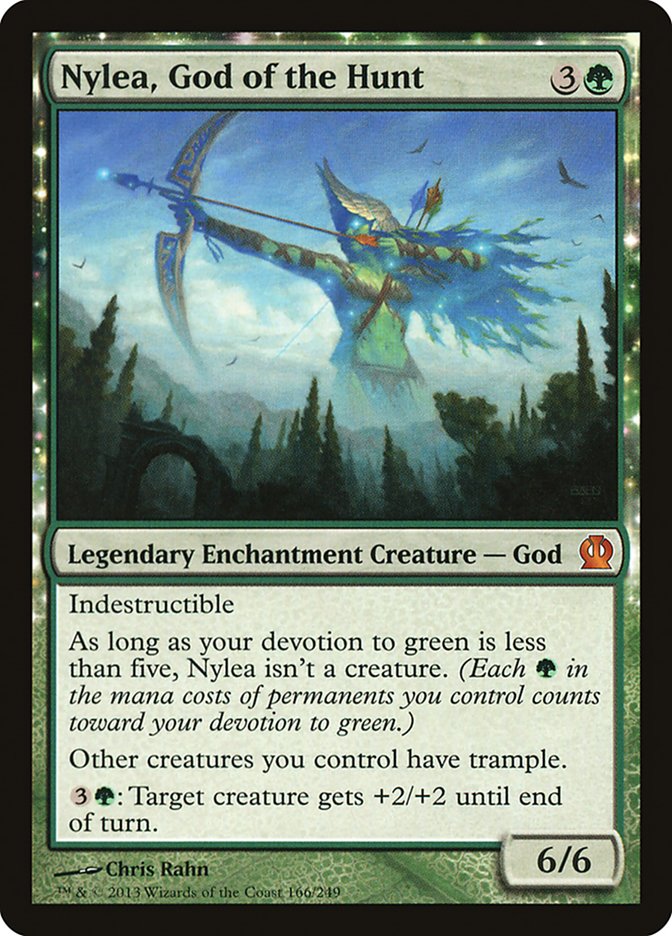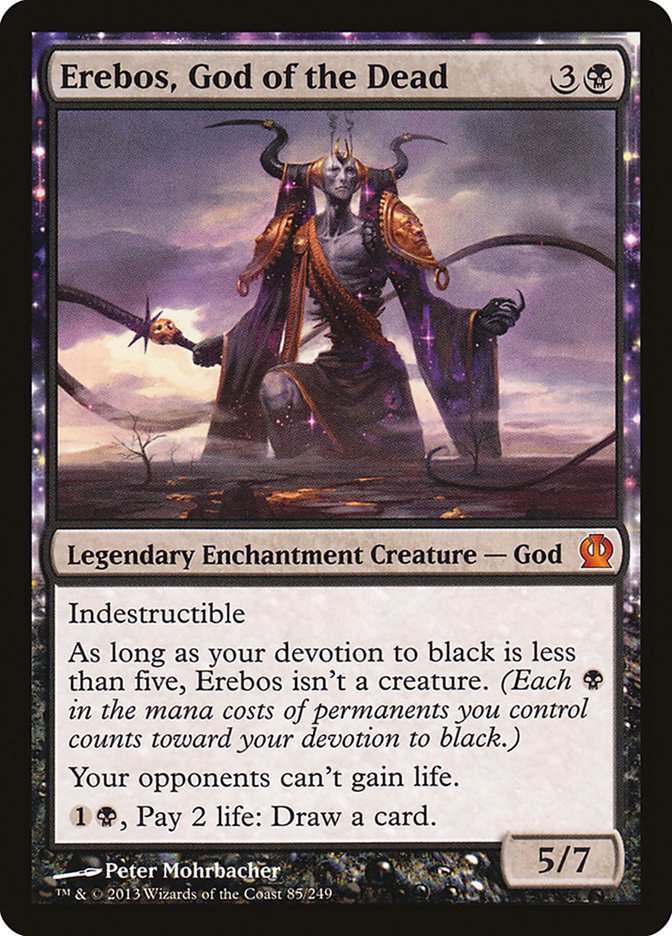In high school, I was a very lazy student. I was the type of kid who never really put much effort towards getting good grades or studying and just barely got by on my natural intelligence. I did, however, take a fair amount of pride in the fact that I got decent grades without trying. Never in a million years did I think I’d do poorly in a class, much less fail one. Well, suffice to say senior year I learned my lesson the hard way.
I decided to take a Greek Mythology class that a few of my friends had taken the year prior and spoke highly of. I figured it would take minimal effort to pull off an easy A and contribute to another year of slacking. Boy was I wrong. I didn’t just do poorly; I earned myself a big fat F. I don’t really even know how it happened. The teacher was reasonable, the class was interesting, and it wasn’t even particularly demanding. I guess sometimes you just need to be willing to put in the effort.
Fast forward five years. Pro Tour Theros in Dublin is right around the corner, and the Constructed format is Standard. I’m on a real team for the first time in my Magic career featuring the likes of Craig Wescoe, Ari Lax, and a handful of other great players. Not only do I want to put up my first strong Pro Tour finish, but I want to do everything in my power to help my teammates and prove myself to them. And wouldn’t you know it—the new set coming in to turn Standard on its head and serve as the Pro Tour Draft format is based on my high school nemesis. You can bet your bottom dollar I won’t be making the same mistake twice.
Assuming you aren’t Chained to the Rocks, you should already know Theros spoiler season is well underway. With each passing day new cards are being added to the Theros roster, each with more potential than the last. I’ve had my eyes peeled every night at midnight, carefully taking in each new option. Today I’d like to talk about two aspects of this set that I think will be very influential in the upcoming months: the new land cycle and the God cards.
Scry Lands
To start things off, let’s address the elephant in the room. As of Friday morning Temple of Deceit and its brethren were revealed. Like most other people I’ve talked to, when I first saw this new cycle, I was pretty disappointed. I’d definitely had my fingers crossed for the legendary dual land cycle that everyone was whispering about.
While this cycle might not have the same flair the legendary lands would, that doesn’t make them bad like most people seem to think. The truth is we’ve been spoiled with incredible mana fixing for quite a while now. You can’t just compare them to the power level of past cards; we’re going to be working with a whole new Standard. So what exactly does this cycle mean?
First off, the style of viable aggressive decks is going to have to change. Many current aggro decks rely on the M13 and Innistrad lands coming into play untapped to support their somewhat dubious three-color mana bases. Without having access to this utility, aggro decks will be pushed more toward mono- and dual-color mana bases. Since two-color aggro decks will only have one "comes into play untapped" fixer, they’re going to slow down a bit. Taking the monocolor route will raise consistency but come at the cost of power. However, thanks to the new devotion mechanic, there will be some reward for this.
The other thing to take into consideration is how good scry 1 actually is. It’s definitely not a flashy ability. I’m pretty sure these lands could have been printed at uncommon and no one would have batted an eye. Even still, it’s pretty good value. In the early game, you get to smooth out your draw and dodge mana screw/flood, and in the late game, you get to make sure you draw some gas. I think we’re going to be pleasantly surprised by how well these new lands play.
The Five Gods
As I mentioned before, we have a new mechanic in the form of devotion. Your devotion to a color is based on how many mana symbols of that color you have on permanents you control. From what we’ve seen so far, certain cards offer different benefits based on your devotion to their color. Clearly a mechanic of this nature incentivizes you to play only a single color to maximize the value you can get from it.
The headliners for devotion are the Gods themselves. Each color has a God, and each one uses the devotion mechanic. While they all do very different things, the structure for each is similar. Let’s look at Thassa, God of the Sea as an example:
There are four factors put into their design:
1. Each God starts out as a legendary enchantment costing either three or four mana, with one colored mana of its respective color in its casting cost. All of its abilities will function while it is an enchantment, but for it to actually become a creature, you need to have a devotion count of five or higher to its color counting the one you get from itself. To make up for this requirement, each God has above-average combat stats to reward you once you turn it on.
2. Each God is indestructible. Traditional enchantment and creature removal does not affect them.
3. Each God has either a static or a triggered ability.
4. Each God has an activated ability.
As you would expect, the Gods are all very powerful. Due to their devotion mechanic, there’s a big upside to playing them in permanent-filled decks—it allows you to reap the benefit of turning them into a creature as early and consistently as possible. However, I think there are two lines one can take when it comes to building decks around the Gods.
On one hand, you can go all in on the devotion plan. Taking this route is pretty simple. You’re going to need to build a deck that is heavy on permanents, especially ones that have strong mana requirements in the early game to maximize devotion.
The other option is potentially trickier. The Gods all have very powerful abilities that are just begging to be built around. For this strategy, you basically view each God as an enchantment and synergize around their abilities. You look at their creature side as an incidental advantage, not the main goal.
So how do we know which option is the best to explore? It comes down to the specifics of the Gods themselves. To illustrate my point, let’s take a look at the green, black, and red Gods. Nylea, God of the Hunt (green) fits perfectly with the devotion strategy; Erebos, God of the Dead (black) is just right for the enchantment plan; and Forge[/author]“]Purphoros, God of the [author name="Forge"]Forge[/author] plays well on both teams.
Nylea does a great job of exemplifying a God you really want to be able to turn into a creature. To start off, it has the best combat stats of all five Gods. More importantly, take a look at its abilities. Notice any common denominator? I’ll give you a hint—they all involve creatures! Since much like green’s nature in general Nylea is all about creatures, the card already lends itself to being played in a permanent-heavy deck. And luckily enough for us, the most powerful green creatures have a tendency to be packing a lot of colored mana symbols.
One easy example of this is Kalonian Tusker. Tusker is one of multiple two-mana 3/3s we’re going to have access to in the new Standard. Although it hasn’t found much of a home yet, just think about how sweet it would be in a Nylea deck. Not only does it get you more than half way towards the devotion sweet spot, but its individual power level goes way up once it has trample. Throw in the fact that it is going to be attacking next to an indestructible 6/6 that can also turn it into a 5/5 at a moment’s notice and you’ve got yourself a powerful duo.
Overall, I think Nylea, God of the Hunt is at its best when you can reliably make it a creature ready to battle on turn 4. Next, let’s take a look at the other side of the coin.
The biggest thing that jumps out at me when I look at Erebos is its activated ability. Being able to draw cards repeatedly like that is very powerful. You do, however, have to realize it comes at a substantial cost. You need to 1) have spare mana to invest and 2) have enough life to keep the cards flowing. Due to this, I don’t think Erebos is in its prime alongside creatures.
In a creature-heavy deck, you usually want to curve out as best as possible, and it can be hard to find the spare mana to actually use the ability. Additionally, the best way to defend your life total is going to be through removal spells. The more of their threats you remove, the more times you can safely use the card draw ability to take over the game. Because of these two reasons, the first place I’m going to look to stick Erebos is in a Mono-Black Control deck that uses Corrupt to balance out the life loss from drawing extra cards. Being able to turn Erebos into a win condition late game would be icing on the cake in a deck like this.
It’s a shame that Erebos’ static ability is underwhelming, but I still think it has a good shot of seeing tournament play. Finally, let’s take a peek at the might of the God of the Forge:
Wow. This card has a whole lot going on. Not only does it have incredible combat stats, but its abilities are very synergistic. Purphoros would be a great centerpiece in either approach for a build-around-a-God deck.
We’ll kick things off with the devotion plan. Not only does Purphoros pack six power, but he has the best two devotion supporters in Standard pre-Theros: Burning-Tree Emissary and Boros Reckoner. Burning-Tree Emissary comes with a cool two red symbols in its cost and allows you play an additional red creature on turn 2! As we’ve seen for the last few months, Boros Reckoner is an incredible creature, and now it provides three devotion on turn 3. With a curve like that, turning Purphoros into an attacker is going to be a cakewalk.
With such a strong body and easy-to-enable devotion, you’d think Wizards might skimp on the enchantment portion of Purphoros just a little. However, that couldn’t be further from the truth. Adding a free Shock upstairs for each creature that hits the battlefield would be insane even if it didn’t trigger off of tokens. I think my jaw actually hit the floor when I saw that the nontoken clause wasn’t there.
It’s because of this triggered ability that the temptation to stray away from the devotion portion of Purphoros exists. I know a Young Pyromancer who is fresh off the block and just begging to put some tokens into play and trigger the red God’s rage. Unfortunately, tokens don’t actually have a mana cost, so they don’t do much when it comes to making Purphoros a creature. Additionally, when a building a deck to cater to its trigger, you’re going to want to branch into other colors to have access to more token producers or even some card draw, making hitting five devotion even less reliable. Even still, the enchantment portion of this God is so good that it’s worth trying to make work.
If only Purphoros had a way to pump your token army once it is assembled. That would be absolutely unreal. Oh well, I guess you can’t have it all . . .
Well, there you have it—our new mana fixing and some powerful mythic Gods asking to be busted. I can’t wait for the entire set to spoiled so I can start putting all of my effort and devotion into building the best Standard deck possible and figuring a fresh Limited format. I definitely won’t be slacking this time around.
I hope you enjoyed this week’s article! I’d love it if in the comments below you would tell what cards you think are going to shake things up.





